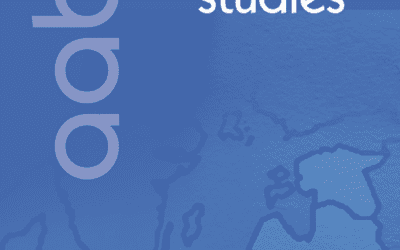The second 2021 issue of Journal of Baltic Studies (Vol 52, Issue 2) is now available online. The issue contains articles on the contradictions between regulations and reality on consensual relations between German soldiers and Latvian women during World War II; history, trauma, and narrative perspective in A Woman in Amber by Agate Nesaule; Soviet-era design elements at Tammsaare Park in Tallinn, Estonia; changes and adjustment in the foreign policy of Lithuania during Dalia Grybauskaitė’s presidency; the transformation of the Ministries of Foreign Affairs in the Baltic countries; and the 2020 parliamentary elections in Lithuania.
The issue also includes three book reviews and a list of recently published Baltic titles.
Articles
Policy vs. reality: intimate contact in Nazi-occupied Latvia
Oskars Gruziņš
To better understand the contradictions between regulations and reality on consensual relations between German soldiers and Latvian women, this article investigates the development of Nazi sexual policies and how restrictions were dealt with by the Wehrmacht (German Army). This regulatory analysis is then applied to an evaluation of life in occupied Latvia. Analysis shows how such intimate contact was a continuous concern for the Nazis, how the debate on the ‘racial value’ of Latvians and their relations with Germans changed with the war, how perceived military needs affected and even altered this ‘value,’ and how, despite policy, such relationships flourished in occupied Latvia.
History, trauma, and narrative perspective in A Woman in Amber by Agate Nesaule
Karlis Verdins
A Woman in Amber (1995), a memory book by the Latvian-American writer Agate Nesaule, makes readers ask questions about the relationship between memoir and fiction, as well as the credibility of a text written from a child narrator’s perspective. Another question addressed in the article is how Nesaule’s narrative perspective differs across languages and cultures, and what is at stake when issues of memory and fiction seem to be at odds with the position of an exile writer and representation of nationalism.
Tammsaare Park’s lost landmarks of revolution, Soviet-era path layout, and pedestrian use: Tallinn, Estonia
Vaike Haas, PLA, ASLA, LEED-AP
At Tammsaare Park, Soviet-era design elements persist despite political/cultural changes and 2018 renovations. Within the park, the massacre of New Market labor demonstrators sparked outrage during Estonia’s Revolution of 1905; subsequent memorials and the park’s paths gradually evolved until bombing in 1944 obliterated the New Market. A 1947 redesign then diverted attention to a new focal point imposed by crisscrossed paths, which persisted through 2018 renovations, when the memorial to 1905 was peripheralized. Park renovations preserved the early-Soviet era path layout despite changes in circulation, as evidenced by pedestrian counts, illustrating a case study of path dependency in the post-Soviet public space.
Changes and adjustment in the foreign policy of Lithuania during Dalia Grybauskaitė’s presidency
Tomas Janeliūnas
This article looks at the main changes in Lithuania’s foreign policy between 2009 and 2019, and tries to evaluate the major shifts caused by Grybauskaitė’s decisions and choices to concentrate on specific positions or priorities. Gustavsson’s model of different stages of foreign policy changes serves as the theoretical basis for evaluating the selected cases. The study is based on interviews carried out in 2017–19 with Grybauskaitė and all her foreign policy advisors. By investigating selected cases from the agent perspective, this study can help elucidate why some of their decisions deviated from traditional Lithuanian foreign policy.
The transformation of the Ministries of Foreign Affairs in the Baltic countries
Didzis Kļaviņš
This article analyses the transformation of the Ministries of Foreign Affairs (MFA) and the nature of changes in the Baltic countries (Estonia, Latvia, and Lithuania). By applying Brian Hocking’s analysis of ‘gatekeeper image’ and ‘boundary-spanner image’, the answers to the question of how the MFA in the three Baltic countries adapt to the transformation of the international system in the twenty-first century have been sought. Foreign policy yearbooks, reports, and 48 in-depth interviews with high rank diplomats form the basis of the empirical material of this research.
Change in a time of pandemic: the 2020 parliamentary elections in Lithuania
Mindaugas Jurkynas
This article reviews the 2020 parliamentary (Seimas) elections in Lithuania. Unlike many European and neighboring democratic countries, Lithuania’s voters made no radical changes this time. Brand new, populist, radical, Euroskeptic, anti-system, ex-communist, far-right, and far-left parties failed to enter parliament. The party system remained moderately fragmented but polarization did not mar the elections. The Conservatives and two liberal parties returned to power after an eight-year hiatus. No sitting government in Lithuania has ever been reelected since 1990. For the last 12 years, all governments have served full four-year terms. Herein, I will examine the most recent parliamentary elections and the evolution of the electoral system. The characteristics of the electoral contestants and the evaluation of the electoral campaign will be explored along with the election results, indices, and the political aftermath of the 2020 general elections.
Book reviews and recent publications
Fragmentation in East Central Europe: Poland and the Baltics, 1915–1929, by Klaus Richter, Oxford, Oxford University Press, 2020, 355 pp., ISBN 978-0-19-884355-9 (Hardback), 70 GBP
Tomas Balkelis
Tallinn architecture 1900–2020: architecture guide, by Karin Hallas-Murula, Tallinn, Eesti Arhitektuurimuuseum, 2020, 172 pp., €32.00, ISBN 978-9949-726-25-7(paperback)
Brent McKenzie
Folklore in Baltic history: resistance and resurgence, by Sadhana Naithani, Jackson, University Press of Mississippi, 2019, 128 pp., $90.00/$30.00 (pbk), ISBN 978-1-4968-2356-4; ISBN 978-1-4968-2357-1
James M Nyce
List of books received and recent publications
About the journal
Journal of Baltic Studies (JBS), the official journal of AABS, is a vital source of scholarship for those engaged in Baltic state and Baltic Sea region studies. JBS is a peer-reviewed, multidisciplinary journal published on a quarterly basis that aims at progressing and disseminating knowledge about the political, social, economic, and cultural life – both past and present – of the Baltic states and the Baltic Sea region. JBS seeks high-quality original articles and review of broad scholarly interest that advance knowledge of the Baltic states and Baltic Sea region.
Published quarterly by the AABS, the annual fee for both membership in the Association and a subscription to JBS is $70.00, $35.00 for full-time students, and $35.00 for emeritus members. Members of the Association receive a free personal subscription to the Journal.
JBS welcomes article and book review submissions from AABS members and other scholars. See the Instructions for Authors page for more info.
Other Journal of Baltic Studies News
Journal of Baltic Studies 54/1 Now Available Online
The first 2023 issue of Journal of Baltic Studies (Vol 54, Issue 1) is now available online. This special issue is entitled "Memory and recognition of the Nazi genocide of Roma in the Baltic context." An editorial introduction by Volha Bartash and Neringa Latvytė lays...
Journal of Baltic Studies 53/4 Now Available Online
The fourth 2022 issue of Journal of Baltic Studies (Vol 53, Issue 4) is now available online. The issue contains two standalone articles, on the Baltic Russian-speaking communities' responses to crisis and on the historical photography of disability in Latvia, and a...
Journal of Baltic Studies 53/3 Now Available Online
The third 2022 issue of Journal of Baltic Studies (Vol 53, Issue 3) is now available online. The issue contains articles such as a study of topmost superlexical prefixes of the Baltic verb, border and air space violations in the Baltic Sea region, and teachers’...

